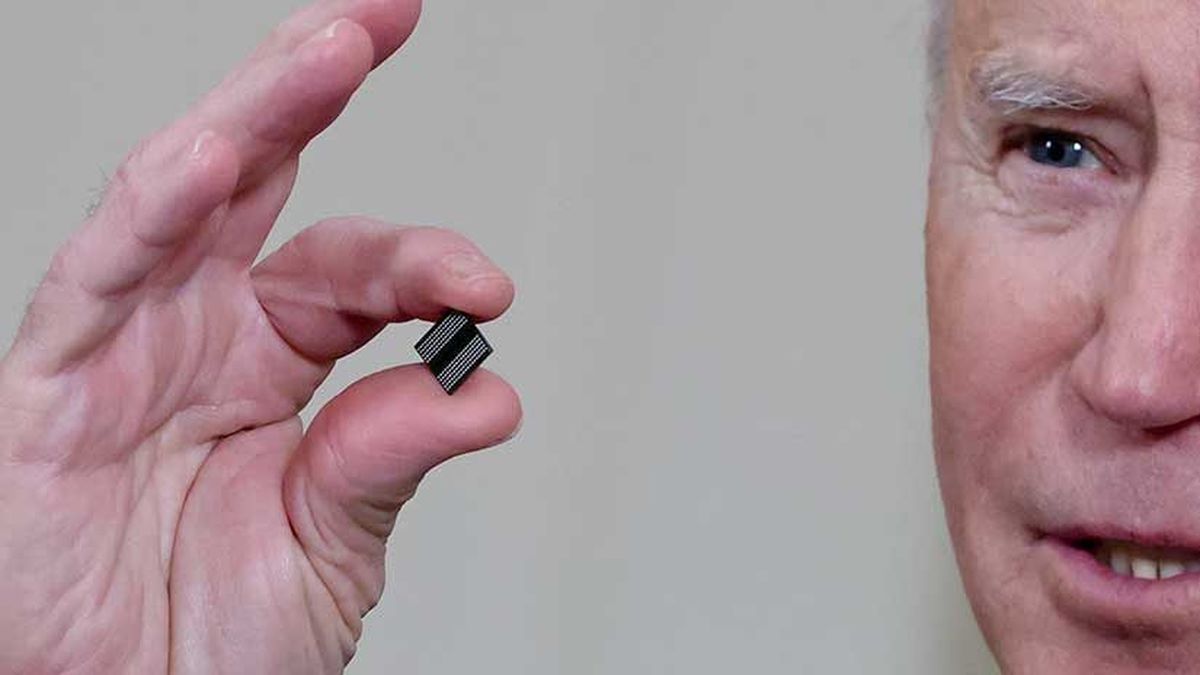Joe Biden’s administration announced a last-minute trade investigation this Monday on “legacy” semiconductors made in Chinawhich could lead to more US tariffs on the Chinese chips that power everyday products like cars, washing machines and equipment telecommunications.
US Trade Representative Katherine Tai said the investigation is aimed at protecting US and other producers from China’s massive state buildup of domestic chip supply, Reuters says.
The investigation under theSection 301“, launched four weeks before President-elect Donald Trump takes office on Jan. 20, will be handed over to his administration in January for completion, Biden administration officials said. This effort could offer Trump a ready path to begin imposing some of the elevated 60% tariffs. that has threatened on Chinese imports.
Outgoing President Joe Biden had already imposed a 50% tariff on Chinese semiconductors that will take effect on January 1. His administration has also tightened restrictions on exports of advanced artificial intelligence, memory chips and chip-making equipment.
What’s behind
Legacy chips use older manufacturing processes, introduced more than a decade ago, and are often much simpler than chips used in AI applications or sophisticated microprocessors.
The US Secretary of Commerce, Gina Raimondosaid on Monday that his department’s investigation showed that two-thirds of American products that use chips contain legacy Chinese chips, and half of American companies did not know the origin of their chips, including some in the defense industry, which which was “quite alarming”.
China’s Ministry of Commerce said in a statement that the investigation into the US chips was “protectionist“and would hurt American companies and destabilize the global chip supply chain.He added that Beijing “will take all necessary measures to firmly defend its rights and interests.”
A spokesman for Trump’s transition team did not immediately respond to a Reuters request for comment. Tai told reporters that the trade agency has found evidence that China is targeting the semiconductor industry for global dominance, adding: “This is allowing their companies to rapidly expand capacity and offer artificially cheaper chips that threaten to significantly harm and potentially eliminate their market-oriented competition.“.
The Biden administration will begin accepting public comments on the investigation on Jan. 6 and has planned a public hearing for March 11 and 12, according to a notice in the Federal Register about the investigation, which must be completed within a year.
The investigation is being conducted under Section 301 of the Trade Act of 1974, the same unfair trade practices statute that Trump invoked to impose tariffs of up to 25% on some $370 billion in Chinese imports in 2018 and 2019. , which sparked a nearly three-year trade war with Beijing.
The Information Technology Industry Council, a trade group representing the U.S. technology sector, said the research could have complex and far-reaching implications for the global economy and supply chains, and urged the USTR to “not prejudge the result.”
Jason Oxman, the group’s president, expressed concern about launching the investigation during a presidential transition, “and we urge officials in the outgoing and incoming administrations to conduct the investigation in an objective and collaborative manner,” Oxman said in a release.
Most US smartphones, laptops, video game consoles and other consumer electronics are still imported from China.
Guaranteed goods in the supply chain
A Biden administration official said that, in addition to examining the impact of imported chips themselvesthe research will also look at their incorporation into components and end products for critical industries, including defense, automotive products and medical devices. It will also focus on Chinese production of silicon carbide wafers and substrates for semiconductor manufacturing.
Semiconductor microchips USA China.jpg
The US seeks to reduce its dependence on Chinese semiconductors and strengthen its own supply chain.
After the COVID-19 pandemic disrupted semiconductor supplies and temporarily halted production of cars and medical equipment, the US has sought to build its own semiconductor supply chain with $52.7 billion in new production subsidies. of chips, research and development of the workforce.
Source: Ambito
I am a 24-year-old writer and journalist who has been working in the news industry for the past two years. I write primarily about market news, so if you’re looking for insights into what’s going on in the stock market or economic indicators, you’ve come to the right place. I also dabble in writing articles on lifestyle trends and pop culture news.




